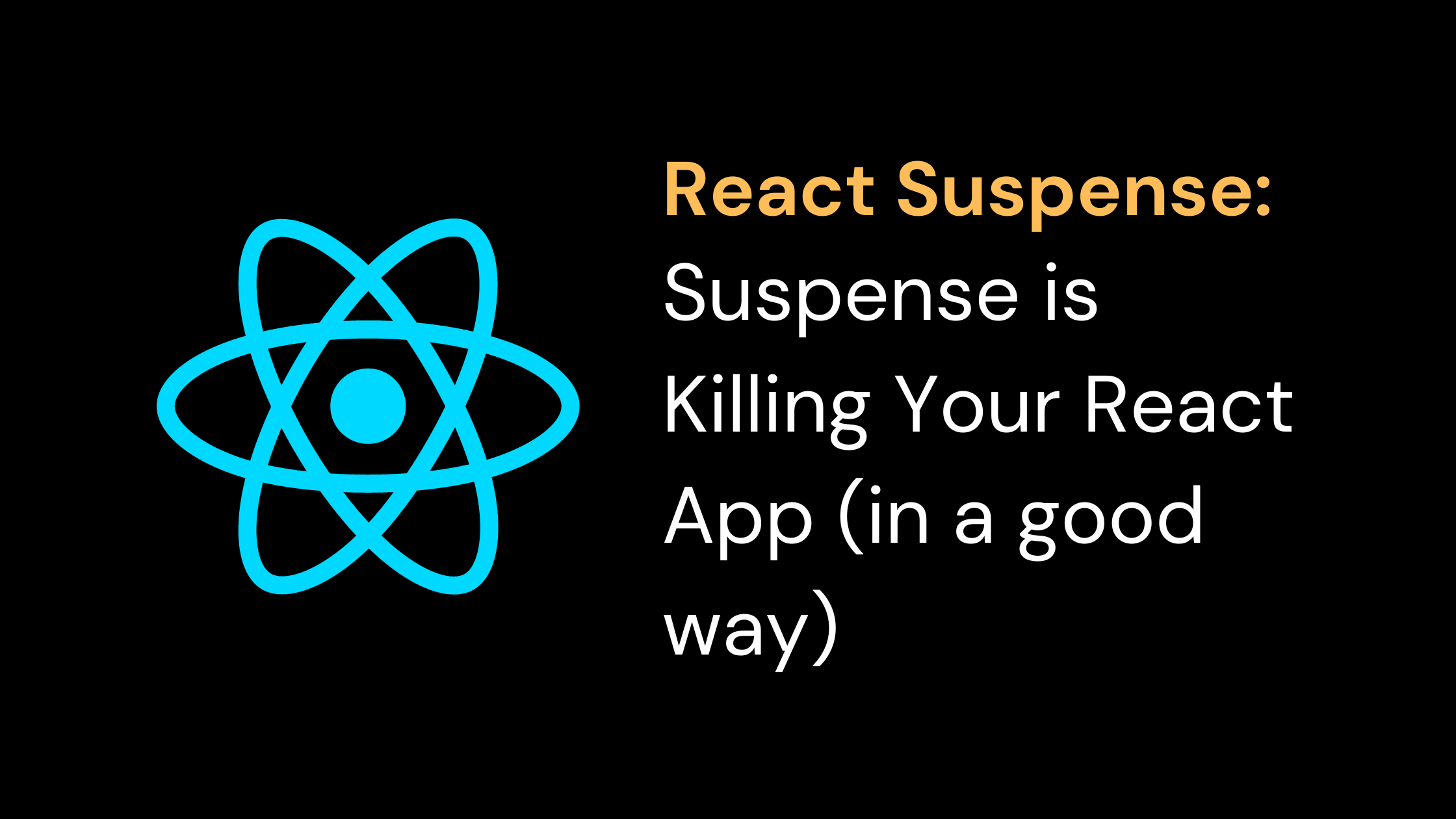Suspense is Killing Your React App (in a good way)
 Meet Makwana
Meet Makwana
Hey what's up react folks, since you're here, let me explain what i mean by "Suspense is Killing your application" real quick.
Imagine your React app as a slow-moving snail. It's sluggish, frustrating users, and costing you potential customers. Now, picture that same app as a cheetah, blazing fast and leaving competitors in the dust. That's the power of Suspense.
By strategically implementing Suspense, you can dramatically improve your app's performance, transforming it from a slow, sluggish experience into a lightning-fast, user-delightful one. It's like hitting the reset button on your app's speed, without sacrificing any functionality.
Let us now understand what is suspense, how it works, its use-case and few examples.
What is Suspense?
Suspense is a built-in React component that lets you render fallback UI until it's children completes loading.
<Suspense fallback={<FallbackUI />}>
<MyComponent />
</Suspense>
How it works?
It is a low level implementation that tracks a component's lifecycle and delay the rendering while the require data is loading. This improves user experience as user won't have to see partially rendered or broken UI while component is loading.
Okay so when we will use it? for that lets first discuss some common performance issues in React.
Common performance issues in React apps
Slow Rendering
Re-renders: Unnecessary re-renders due to prop drilling or inefficient state management can significantly impact performance, especially with complex components.
Expensive computations: Complex calculations or heavy data processing within components can cause noticeable delays.
Large component trees: Deeply nested component hierarchies can lead to performance bottlenecks as changes propagate through multiple levels.
Data Fetching and Loading States
Unpredictable loading times: Users often face frustrating waiting periods while data is fetched.
Loading spinners: Generic loading indicators can be uninformative and create a poor user experience.
Error handling: Inadequate error handling can lead to unexpected app behavior and frustrate users.
User Experience Issues
Janky UI: Performance issues can result in a laggy and unresponsive user interface, negatively impacting user satisfaction.
Poor perceived performance: Even if the underlying performance is good, users may consider the app as slow if there are noticeable delays or loading times.
These are common challenges that developers face when building React applications. In the next section, we'll explore how Suspense can address these issues and provide a smoother user experience.
Now we will explore the use-cases of Suspense in React.
Suspense Use-Cases
Data Listing: Show a loading indicator while fetching data for a list. This prevents empty screens and provides visual feedback to the user. Once data arrives, render the list items.
Search: As users type, display a loading indicator while fetching search results. This creates a responsive and engaging search experience. Render results incrementally as they load, giving users immediate feedback.
Example
import { Suspense, useState, useEffect } from 'react';
function MyComponent() {
const [data, setData] = useState(null);
useEffect(() => {
const fetchData = async () => {
const response = await fetch('https://api.example.com/data');
const data = await response.json();
setData(data);
};
fetchData();
}, []);
return (
<Suspense fallback={<div>Loading...</div>}>
{data ? (
<ul>
{data.map((item) => (
<li key={item.id}>{item.name}</li>
))}
</ul>
) : null}
</Suspense>
);
}
Breaking Down the Code
What's happening here? We're creating a React component that fetches data from an API and displays it as a list. To enhance user experience, we're using Suspense to show a "Loading..." message while the data is being fetched.
Step-by-Step:
Import necessary components: We import
Suspense,useState, anduseEffectfrom React.Create a component: We define a functional component named
MyComponent.Manage data: We use
useStateto store the fetched data, initially setting it tonull.Fetch data: Inside
useEffect, we define an async functionfetchDatato fetch data from the specified API endpoint. Once fetched, the data is set usingsetData.Handle loading and display: We use
Suspenseto wrap the list. While data is loading, thefallbackprop displays "Loading...". Once data is available, the list is rendered with each item as a list item.
In essence: This code ensures that while the data is being fetched, users see a "Loading..." message. Once the data arrives, the list is populated and displayed to the user.
That's all guys.
Let me know if you already tried implementing Suspense in your React projects, I’d love to hear about your experiences! Share your tips, challenges, or questions in the comments below. Happy hacking!
Subscribe to my newsletter
Read articles from Meet Makwana directly inside your inbox. Subscribe to the newsletter, and don't miss out.
Written by

Meet Makwana
Meet Makwana
Hello there! My name is meet, I am 20 Y/O Full-Stack Developer.